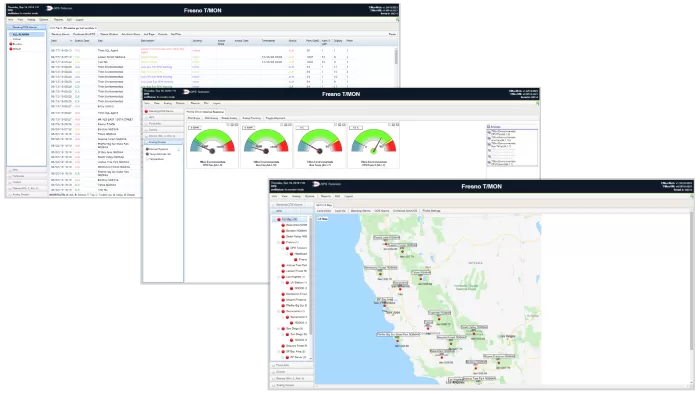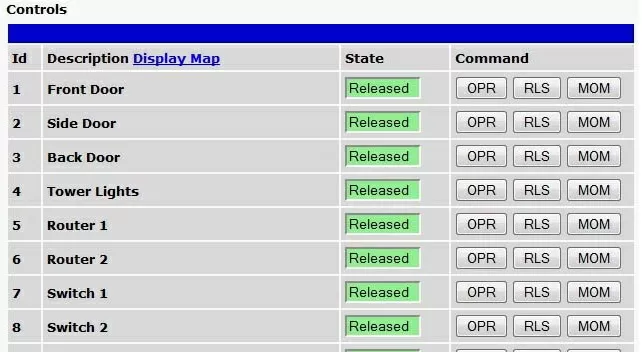Check out our White Paper Series!
A complete library of helpful advice and survival guides for every aspect of system monitoring and control.
1-800-693-0351
Have a specific question? Ask our team of expert engineers and get a specific answer!
Sign up for the next DPS Factory Training!

Whether you're new to our equipment or you've used it for years, DPS factory training is the best way to get more from your monitoring.
Reserve Your Seat TodayIf your remote site has structure beacons - lights that warn aircraft of their presence - then you'll definitely want to make sure you have these monitored with an automated system.
As a trusted provider of remote monitoring solutions, we have helped many clients monitoring their beacon lights. While alarm monitoring is very important at many levels, it's never more so than with beacon lights. A tower light failure not only stops your daily actions but also increases your risk of heavy fines (due to FCC regulations) and liability.
Therefore, it's vital to understand how to properly monitor tower lights with an effective system - after all, that's how you'll protect your long-term profit.
Let's understand how you can monitor beacon lights remotely.
Imagine if a beacon light on a tower failed and went undetected for several hours - or even days. That tower is now a highly dangerous flight hazard to aircraft. Without warning, a simple light failure could cause a tragedy.
The Federal Communications Commission (FCC) has several rules for antenna structures to ensure aircraft safety. Here are a few examples of FCC rules that tower owners should know and follow:
The owner of any antenna structure which is registered with the Commission and has been assigned lighting specifications referenced in this part:
(a)(1) Shall make an observation of the antenna structure's lights at least once each 24 hours either visually or by observing an automatic properly maintained indicator designed to register any failure of such lights, to insure that all such lights are functioning properly as required; or alternatively,
(2) Shall provide and properly maintain an automatic alarm system designed to detect any failure of such lights and to provide indication of such failure to the owner.
(b) Shall inspect at intervals not to exceed 3 months all automatic or mechanical control devices, indicators, and alarm systems associated with the antenna structure lighting to insure that such apparatus is functioning properly.
The owner of any antenna structure which is registered with the Commission and has been assigned lighting specifications referenced in this part:
(a)Shall report immediately by telephone or telegraph to the nearest Flight Service Station or office of the Federal Aviation Administration (FAA) any observed or otherwise known extinguishment or improper functioning of any top steady burning light or any flashing obstruction light, regardless of its position on the antenna structure, not corrected within 30 minutes. Such reports shall set forth the condition of the light or lights, the circumstances which caused the failure, the probable date for restoration of service, the FCC Antenna Structure Registration Number, the height of the structure (AGL and AMSL if known) and the name, title, address, and telephone number of the person making the report. Further notification by telephone or telegraph shall be given immediately upon resumption of normal operation of the light or lights.
(b) An extinguishment or improper functioning of a steady burning side intermediate light or lights, shall be corrected as soon as possible, but notification to the FAA of such extinguishment or improper functioning is not required.
What is important to take from this is that you should monitor your beacon lights constantly, and if for some reason the light goes out, you need to report it immediately to the FAA.
If you're a tower owner, you'll find the rules on construction, marking, and lighting of antenna structures very informative. You can also register new towers by visiting the FCC's Antenna Structure Registration (ASR) portion of their website.
The FCC requires proper beacon lights maintenance through tower light regulations. Failure to maintain sufficient levels may result in sizable fines, damaging liability, or even loss of life. So, to ensure that your remote site adheres to the FCC Aircraft Obstruction Light Rules, constant vigilance is required for your beacon light structures.
Making a daily observation of tower lights by driving to all of your sites is expensive and unreliable. As you can imagine, the fuel and staffing expense for daily truck rolls to distant sites adds up very quickly. If your personnel fails to perform their daily checks, outages may go unreported and your risk of an FCC fine will skyrocket.
One way to resolving this issue is by using a remote monitoring system. This technology pays for itself very quickly. A beacon light monitoring system will help you meet monitoring requirements, protecting you from FCC fines and liability.
These systems can also provide you with an excellent return on investment by eliminating unnecessary truck rolls for visual observation white it allows you to fulfill FCC requirements for monitoring tower light operation and reporting outages.
With advancements in technology, beacon light remote monitoring can now be automated by using an RTU (Remote Terminal/Telemetry Unit) that measures the amperage draw of tower lights. They also allow you to monitor sites virtually anywhere without the need for a LAN connection.
RTUs are an important piece of a remote monitoring system because they monitor and report events occurring at a remote site. These devices allow you to monitor tower lights 24 hours a day, 7 days a week for any major or minor alarms. RTUs also provide flexible alarm notification to you via email or text message.

They also have the capacity to control site equipment remotely with output relays. These relays, also called control relays, are an excellent way to activate backup lights remotely when your RTUs detect a primary lighting failure.
Early automated light checking and monitoring systems were expensive and were vulnerable to failures caused by utility power outages and lighting damage. Today's RTUs are a high-value addition to remote monitor and control your beacon lights.
If you're only monitoring a few sites, you might not need an alarm master at all. Your RTU should provide you with a standalone local alarm monitoring capability that lets you monitor alarms directly.
However, if you need to keep an eye on more than 6 or 7 beacon light structures, keeping track of all your alarms on separate web browser systems gets complicated. At this point, you need central alarm presentation, and you should start looking at a master station system.
If that's your scenario, look for a master station that is a multi-protocol, multi-function remote alarms monitoring system designed as a single-platform solution for monitoring and mediating alarms at remote sites into a single, centralized location.

Your master should be able to collect alarms from lots of different equipment, throughout many manufacturers and protocols, and displays the state of your entire network in one interface, eliminating the need for specialized terminals.
Having a master station is a good best practice specially is beacon lights is not the only equipment you have to monitor at your remote sites.
As we've seen previously, the FCC dictates that tower lights must be monitored and that any light failures must be corrected within a matter of minutes. Therefore, using the right monitoring tools for your tower lights cuts costs by shielding you from fines.
Because of that, efficient monitoring equipment must be installed at your tower sites to notify you of outages and any other problems that occur.
But what kind of best practices should an efficient remote monitoring system follow?
A reliable system to monitor your beacon lights needs to feature the following capabilities:
A quality remote monitoring system allows you to gain detailed info about your beacon lights wherever you are by sending alerts to your cell phone or email.
Monitoring is most crucial when there is a power failure at your site. Having monitoring equipment with an uninterruptible power source (UPS) allows your monitoring system to remain online, even when the power is out.
An efficient monitoring system also features control relays to remotely activate just about any piece of equipment, backup beacon lights is an example.

In summary, remote monitoring your tower sites is an investment that will help you to avoid unnecessary expenses. The risk of FCC fines for beacon lights failures dwarfs the cost of a quality monitoring system. If you're not monitoring your beacon lights adequately, you're putting your company's revenue at risk.
In all of our years providing reliable remote monitoring solution, unfortunately we see many companies that only prepare themselves for a tower light failure after an incident happens. So, because of that, we know how critical it is to deploy monitoring equipment before anything happens.
Our Complete Tower Monitoring System (CTMS) is a durable, customizable, light-capacity tower monitoring solution. The CTMS is designed for easy installation at remote tower sites. Why? This makes it cost-effective to seamlessly deploy powerful alarm monitoring throughout your entire network.
The brain of the CTMS is a NetGuardian 216 G3. This time tested, tecol-grade RTU will provide dependable beacon light monitoring. It is placed within a NEMA stainless steel enclosure, so it can withstand temperature, moisture, and other hazards.
To show more about how you can protect yourself from costly tower light failures with an advanced monitoring system, we've put together the Tower Light Monitoring white paper.
So, to learn more about beacon light monitoring solutions, and get answers to questions you might have, download a free copy of the Tower Light Monitoring white paper.

Morgana Siggins
Morgana Siggins is a marketing writer, content creator, and documentation specialist at DPS Telecom. She has created over 200 blog articles and videos sharing her years of experience in the remote monitoring industry.